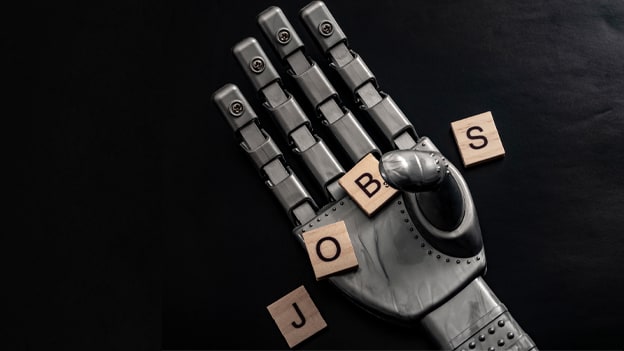The robots are here: To hire us

The robots are coming—to hire and train us. Amid digital disruption and the shift to Industry 4.0, the HR function is not going to remain unchanged. There is a general consensus among HR professionals and AI experts that automation will take over a significant amount of HR’s more routine work, including administrative tasks, data processing and analytics, and even large portions of the hiring process.
“The entire life cycle of HR is being remade by AI and data,” said IBM chief marketing officer Michelle Peluso. “People are using AI to refine job descriptions, to make recruitment fair, to make compensation fair, to measure employees’ skills.”
The robot who hires you
Already, one of the most ubiquitous forms of automation in the hiring process is the applicant tracking system, the tool that almost every company uses to sort and select their job candidates. But even before applicants encounter this system, Peluso suggested, the job description they run into may be automatically generated. AI can analyze the needs of a particular job, match them to the job description, and determine whether the description is appropriate. When properly programmed, AI can even detect bias in recruitment, from the profiles of the candidates considered to the compensation they are offered, and raise flags to decision makers who can correct the issue—this is the flip side of other concerns, raised by cyber-ethics advocates, that poorly taught AI introduces bias into the hiring process.
In fact, some professionals believe that the hiring process may eventually become entirely automated. Jeff Neal, the former chief human capital officer for the US Department of Homeland Security, believes that the use of AI will potentially remove human HR from the process entirely, as advances in AI technology allow more reliable automation of resume screening. In a 2019 blog post, he predicted that hiring managers will one day no longer need to go through the HR function: instead, with full access to AI-powered tools, they will write and classify job descriptions, and then AI will fill the role based on their stated requirements.
The robot who trains you
“The inherent objective of AI is to help you exceed human performance,” observed Richard Wong, head of ICT at Frost & Sullivan. In a time when many organizations find themselves short of skilled workers, AI can fill in with its greater speed, accuracy, cross-functionality, and adaptability, he said.
Already, many companies have introduced AI into the onboarding and training process, often through gamified software. ICT solutions company HKBN JOS, for example, introduced a gamification app to help with recruitment by turning onboarding tasks into game-like challenges, and to encourage upskilling by similarly gamifying learning and development tasks. The company told People Matters that this makes the process more “fun and friendly”, and also helps with employee engagement.
On top of this, AI today can act as a coach. It can measure an employee’s skills based on indicators such as his or her job description and performance; then it can suggest training appropriate for the person’s skill level, and either recommend courses or directly deliver the training itself via chatbot. Such chatbots, known as learning management systems, are increasingly sophisticated today: they are capable of acting as e-coaches, both asking and answering questions, and some even have programmed personas to make them more palatable to employees.
But the robot (probably) won’t be managing you
Hiring and training may be automated in the near future, but managing people is one skill that AI still cannot replace, said Sunita Kannan, ASEAN Lead for AI Advisory/Strategy and Responsible AI at Accenture. Defining management as “the constant review and optimisation of processes and people,” she pointed out: “You need to consider the human aspect.”
One Oxford University study estimates that 90 percent of HR administrative jobs will be automated by 2035, but only 5.5 percent of higher-level HR positions—those that involve strategic thinking, judgement, and human interaction—will be at risk. A McKinsey analysis of the automation potential of various work activities found that while data collection and processing are among the most susceptible to automation, stakeholder interactions and applying expertise are three times less susceptible, while managing others is one of the least susceptible work activities.
Quite simply, AI is not advanced enough to completely replace humans, said Frost & Sullivan’s Wong. Today’s AI, he explained, is classified as “artificial narrow intelligence”: rule-based algorithms that mimic human functions through learning from data sets. The next step up, “artificial general intelligence” that can perceive, understand, and presumably make strategic judgements in the same way as human beings, is still the stuff of science fiction.
In other words, the HR administrative officers of the future, those who carry out data processing and analytics, attend to simple inquiries, and handle basic performance evaluations, will be robots. But the HR managers, directors, and other senior executive positions will still be every bit as human as the people whose needs they care for.















